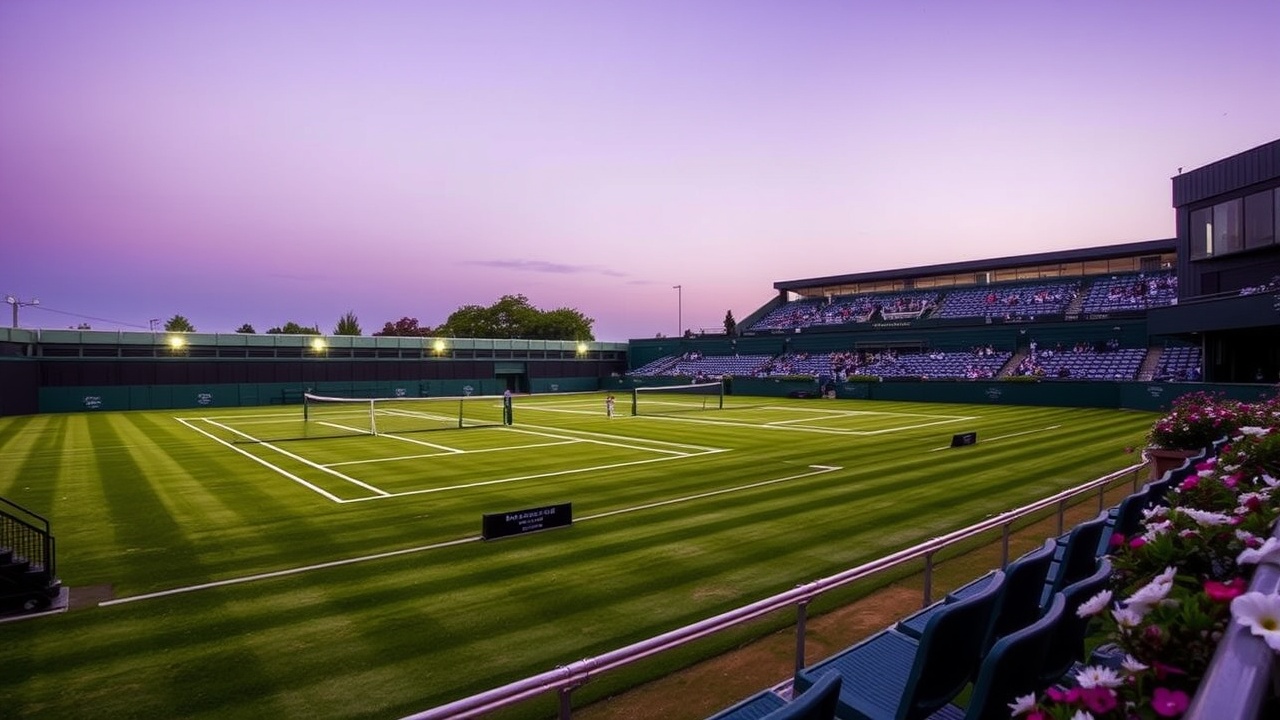Wimbledon Tournament Overview
LONDON — Every summer, the prestigious Wimbledon tournament captivates tennis fans with its iconic traditions—be it the all-white dress code, the overnight ticket queue, or the lush grass courts. This year, however, the event was thrust into the spotlight for an unusual reason: its strict enforcement of an 11 p.m. curfew, which has left some players and spectators baffled.
Curfew Controversy
Just shy of 10:30 p.m. on Monday, American tennis player Taylor Fritz found himself embroiled in a drama during his match against France’s Giovanni Mpetshi Perricard. After leveling the contest at two sets each, both competitors suddenly left the court after discussions with tournament officials. The scene was perplexing for onlookers, who soon learned that an unyielding rule governed the timing of play.
The 11 p.m. curfew has been an official policy since 2009, established when the All England Club installed a retractable roof on Centre Court. This enhancement permitted matches to run well into the evening but drew the concern of local residents. They voiced worries about late-night disturbances, incentivizing the council to impose restrictions to balance the tournament’s global profile with residents’ peace. Merton Council confirmed that the curfew serves to consider local living standards and transport logistics for fans.
Impact on Players and Fans
As Wimbledon gears up for a judicial review regarding the construction of 39 additional courts—a plan aimed at aligning qualifying rounds with other major tournaments—managing public sentiment has become increasingly important. Amidst these ambitions, the curfew stands as an unwavering limit, unlike the more relaxed start times observed at the French Open and the U.S. Open, where matches can extend well past midnight.
Ben Shelton encountered this unique Wimbledon experience on Thursday night when he prepared for a critical serve against Australia’s Rinky Hijikata. As the troubles of darkness began to settle, the chair umpire declared that play would be suspended, leaving Shelton in disbelief as he argued with a tournament supervisor. The official reasoning stemmed from the malfunctioning electronic line-calling system suppressing adequate visibility.
Interestingly enough, while Shelton swiftly returned the next day to win his match in a mere 70 seconds, the concept of curfews raises questions about how they affect both athletes and spectators. Fans at Wimbledon expressed frustration, particularly as the late-night vibe appears essential to other Grand Slam events. This divergence puzzled visitors, such as Theo Moll from Ohio, who remarked on the overwhelming sense of confusion surrounding the abrupt end to Fritz’s match.
Cultural Norms and Player Performance
Indeed, Wimbledon’s aversion to late finishes reflects deep-rooted British cultural norms, as seen with early pub closing hours and dining schedules. One might say that the All England Club embodies the sensible friend who voids late-night escapades for the comfort of an early bedtime. The atmosphere has contributed to local perceptions, reinforcing a level of acceptance regarding the strict adherence to time constraints.
Yet, the implications of the curfew resonate beyond audience sentiment; they also influence player performance. Competitive athletes prefer to avoid the detrimental impact of late-stage matches. The absurdity of playing matches past midnight became a glaring concern in recent years—especially for Novak Djokovic, whose late finish at last year’s French Open resulted in injury complications.
Beyond just the 11 p.m. hard limit, players face additional challenges related to conditions on the grass courts as night sets in. While there are no official guidelines regarding light failures, decisions on whether play must be halted rely solely on tournament staff discretion. This precarious balance can lead to feelings of dissatisfaction among both players and fans, as demonstrated by Shelton and Hijikata’s circumscribed match duration.
Conclusion
As the event progresses, players like Shelton continue adapting to Wimbledon’s unique regulations. For those who are seasoned in the sport, born under a different set of tournament rules, the distinctive approach at Wimbledon—often regarded as a world apart from conventional norms—is an integral part of the challenge, character, and history that define this revered tennis landmark.
Wimbledon persists in its tradition-laden ways, strictly adhering to its rules while trying to honor both the players and the local community. The evolution within its framework still maintains the essence of an event steeped in heritage, elevating its status as a quintessential gathering within the world of tennis.




